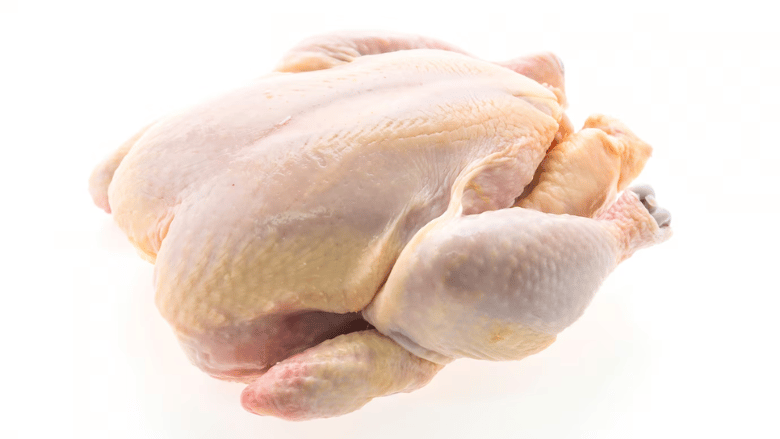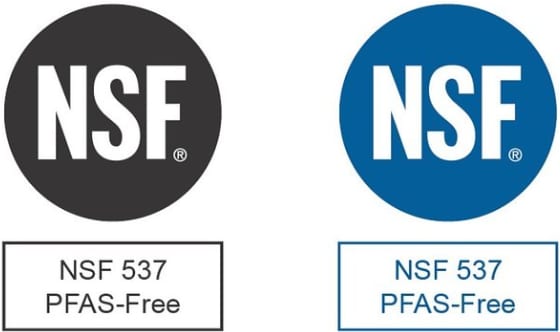
SCROLL
DOWN
The U.S. Food and Drug Administration (FDA) has delayed the compliance date for its Food Traceability Final Rule, fulfilling Section 204(d) of the Food Safety Modernization Act (FSMA 204), by 30 months. The compliance date was originally set for January 20, 2026.
Foods subject to the final rule requirements appear on the Food Traceability List (FTL). At the core of the final rule is a requirement that individuals who manufacture, process, pack, or hold foods on the FTL maintain traceability records including Key Data Elements related to Critical Tracking Events. When requested by FDA for the investigation of food safety incidents, covered firms will be required to provide information to the agency within a reasonable timeframe.
FDA says it remains committed to implementation of the Food Traceability Final Rule, as it will allow for faster identification and removal of potentially contaminated food from the market, resulting in fewer foodborne illnesses and deaths. The agency also says it does not intend to amend the requirements of the final rule. Rather, the compliance date was extended to "afford covered entities the additional time necessary to ensure complete coordination across the supply chain in order to fully implement the final rule's requirements."

FDA Delays FSMA 204 Traceability Rule Compliance Date by 30 Months
USDA Withdraws Proposed Regulatory Framework for Salmonella in Poultry
Image credit: Dr_Microbe/iStock / Getty Images Plus via Getty Images

The U.S. Department of Agriculture's Food Safety and Inspection Service (USDA-FSIS) is withdrawing its proposed regulatory framework for Salmonella in raw poultry, which was published in August 2024 after years of consideration, including engagement with scientific advisory committees and stakeholder consultations. The goal of the proposed framework was to reduce the cases of human salmonellosis attributable to the consumption of poultry, because, despite the effectiveness of FSIS' current Salmonella verification sampling program in reducing the proportion of poultry products contaminated with the pathogen, it has not translated into a reduction in foodborne illnesses.
FSIS is withdrawing the proposed framework because it "determined that additional consideration is needed in light of the feedback received during the public comment period, which closed on January 17, 2025." Based on the input received from stakeholders, FSIS will evaluate whether it should update the current poultry Salmonella performance standards. Consumer protection groups have expressed their disappointment with the decision to withdraw the framework.
The withdrawal does not appear to include the agency's determination to declare Salmonella an adulterant in not-ready-to-eat (NRTE) raw, breaded, and stuffed chicken products at levels exceeding 1 CFU/g, which was announced in April 2023 and made official in April 2024. However, in April 2025, the agency announced that it would delay the date on which its verification sampling program for these products would begin by six months, as well as the date by which producers must reassess their HACCP plans for these products.
On April 22, 2025, the U.S. Department of Health and Human Services (HHS) and FDA held a press conference announcing their intent to phase out the use of synthetic, petroleum-based synthetic dyes from the nation's food supply. The agencies described the action as a "major step forward" in the "Make America Healthy Again" (MAHA) agenda, popularized by HHS Secretary Robert F. Kennedy Jr. and adopted by the Trump Administration.
Calling attention to the "patchwork of state legislation" on chemical food additives cropping up across the U.S., and the need to provide national regulatory consistency and clarity for the food and beverage industry, FDA Commissioner Marty Makary, M.D., M.P.H. presented the agency's plan to phase out synthetic, petroleum-based food dyes from the food supply:
- Establishing a national standard and timeline for the food industry to transition from petroleum-based dyes to natural alternatives
- Initiating a process to revoke authorizations for two synthetic food colorings—Citrus Red 2 and Orange B—within the coming months
- Working with industry to eliminate six remaining synthetic dyes on the U.S. market—green dye 3, red dye 40, yellow dye 5, yellow dye 6, blue dye 1, and blue dye 2—by the end of 2026
- Requesting that food companies remove red dye 3 from their products sooner than the current 2027–2028 deadline.
FDA also intends to authorize four new natural-ingredient color additives in the coming weeks, while also accelerating the review and approval of others. Additionally, the agency plans to collaborate with the U.S. National Institutes of Health (NIH) to conduct research on how food additives impact children's health and development.

FDA Announces Plan to Phase Out Synthetic, Petroleum-Based Food Dyes
Two key food safety advisory committees were terminated by the Trump administration in March—the U.S. Department of Agriculture's (USDA's) National Advisory Committee on Microbiological Criteria for Foods (NACMCF) and the National Advisory Committee on Meat and Poultry Inspection (NACMPI).
Prior to its termination, NACMCF was working on advice related to significant and deadly foodborne illness outbreaks, to prevent similar issues from reoccurring. Most recently, NACMCF was charged with reviewing USDA's Food Safety and Inspection Services' (FSIS') regulatory approach for Listeria monocytogenes. Other issues NACMCF was addressing included Cronobacter in powdered infant formula for FDA. Recent NACMPI meetings focused on USDA-FSIS' definitions for establishment sizes and use of inspection technology, as well as ways in which FSIS could enhance engagement with underserved communities to promote equity while strengthening the food supply chain and ensuring compliance with food safety regulations.
NACMCF, which was established in 1988 by the Secretary of Agriculture, provided impartial scientific advice and recommendations to federal agencies on microbiological and public health issues related to the safety of the U.S. food supply. NACMPI was established in 1971 to advise the Secretary of Agriculture on matters affecting federal and state inspection program activities.
Several lawmakers, as well as a number of food industry and consumer protection groups, have called for the reinstatement of NACMCF and NACMPI. A letter sent in April by a coalition of 24 food industry and consumer protection organizations, as well as seven expert individuals, to Agriculture Secretary Brooke Rollins emphasized that the budgets for these volunteer committees are small compared to their positive public health impact, with NACMCF and NACMPI costing taxpayers $225,000 and $75,000, respectively.
"For decades, the work of NACMCF has been widely influential and referenced within many other documents, policies, and programs," the letter argues. "The vetting process for NACMCF and NACMPI members is rigorous, ensuring appropriate range of perspectives to avoid the undue influence of any particular stakeholder group. These principles—reliance on science over politics, transparency, and efficiency—are consistent with the [Presidential] Administration's priorities. The void left by the absence of these committees will limit our public health and food safety agencies from responding to future crises or, better yet, preventing them from happening in the first place."

Key Federal Food Safety Advisory Committees Terminated; Stakeholders Call for Reinstatement
FDA is launching "Operation Stork Speed," which is an effort to better ensure the ongoing quality, safety, nutritional adequacy, and resilience of the U.S. infant formula supply. Operation Stork Speed will include actions such as:
- Beginning the first comprehensive update and review of infant formula nutrients by FDA since 1998, starting with the issuance of a Request for Information in the coming months
- Increasing testing for heavy metals and other contaminants in infant formula and foods commonly consumed by young children
- Extending the personal importation policy, which allows U.S. citizens to personally bring or ship into the country certain foreign products that are not for sale on the domestic market
- Encouraging companies to work with FDA on any questions regarding increased transparency and clear labeling
- Communicating regularly with consumers and industry stakeholders as significant developments occur to ensure transparency, including information regarding nutrients and health outcomes
- Collaborating with the U.S. National Institutes of Health (NIH) and other scientific bodies to address priority scientific research gaps regarding short- and long-term health outcomes associated with formula feeding in infancy and childhood.
FDA is also encouraging companies to develop new infant formulas and clarify opportunities to help inform consumers about formula ingredients. The announcement of Operation Stork Speed follows FDA's publication of a long-term strategy to increase the resiliency of the U.S. infant formula market, released in January.

FDA Launches 'Operation Stork Speed' to Improve Infant Formula Safety
The UK Food Standards Agency (FSA) recently conducted a study to inform burden estimates for four foodborne pathogens: enteropathogenic Escherichia coli (EPEC), sapovirus, hepatitis A virus, and Toxoplasma gondii. The study is part of the UK's third Intestinal Infectious Disease Survey (IID3), which aims to describe, through multiple studies, the number of cases, general practice presentations, and hospitalizations caused by foodborne transmission of the selected pathogens, including data for September 2023–August 2025.
Analysis of the literature suggested that the percentage of total infections attributable to foods for each of the pathogens were: 64 percent for EPEC, 10–42 percent for hepatitis A, 13–16.3 percent for sapovirus, and 28–61 percent for T. gondii. As only one study was recovered for EPEC, results for grouped diarrheagenic E. coli (DEC) pathotypes, not including Shiga toxin-producing E. coli (STEC), were also included, suggesting that 25–55 percent of DEC disease could be attributed to foods.
Some studies contained data that attributed foodborne infections to specific commodity groups. Based on those studies, fresh produce was the most common foodborne transmission pathway for hepatitis A (45–95.4 percent) and sapovirus (58.3 percent). Pork was found to be the most significant foodborne vehicle for T. gondii infection (20–41 percent).
Although high variability was observed in the results reported by different studies, especially for T. gondii and hepatitis A, FSA determined the estimates to be useful for their calculation of the burden of foodborne infectious intestinal disease in the UK.

UK FSA Publishes Preliminary Foodborne Disease Burden Estimates for Four Pathogens
Traditionally, food allergen labeling has followed a precautionary hazard-based approach, in which food products are labeled with warning statements when even the slightest possibility of allergen contamination is present. To improve upon this commonly used approach, which limits trade and consumer choice and lacks clarity, the Food and Agriculture Organization (FAO) and World Health Organization (WHO) developed a more precise, risk-based approach, in which the application of food allergen warning statements considers actual risks, such as the likelihood and severity of an allergic reaction occurring.
The new approach is based on a series of FAO/WHO Joint Expert Consultations on the Risk Assessment of Food Allergens (JECRA), fulfilling a request from the Codex Committee on Food Labeling and Codex Committee on Food Hygiene to support the development of internationally agreed upon food safety standards and guidelines relevant to the management of food allergens.
To design the new approach, JECRA used three criteria—prevalence, potency, and severity—for assessing proteins for their potential inclusion or exclusion on a priority food allergen list. Global priority food allergens were identified, and then threshold levels for the priority allergenic foods were established. The expert committee also conducted risk assessments to recommend reference doses for each of the priority allergens. The recommended reference doses can be viewed here.

FAO/WHO Develop Scientific, Risk-Based Framework for Food Allergen Labeling
Global food safety would benefit from the harmonization of risk assessment protocols used by different regulatory bodies, experts assert in a new review. The work behind the paper was coordinated by the Packaging Materials Task Force of International Life Sciences Institute Europe (ILSI Europe).
The paper examines the international regulatory differences regarding food contact materials (FCM) by comparing key aspects of FCM risk assessment in the U.S., EU, the South American Common Market (MERCOSUR), India, China, Japan, and Thailand. Although the overarching goal of ensuring that FCMs do not pose a threat to human health is consistent across regulatory bodies, differences in testing requirements, protocols, and assessment criteria can lead to inconsistencies in how risks are managed.
The report highlights the criteria for risk assessment and food categories in the seven regions, and discusses hazard identification and characterization, exposure assessment, and risk characterization. It also describes the experimental data required for risk assessment (i.e., migration testing, simulants, toxicity criteria, etc.). Although some areas of FCM risk assessment are closer to harmonization than others, with a gradual, step-by-step approach, the authors believe that harmonization of risk assessment methods is achievable.

Experts Call for Global Harmonization of Risk Assessment Methods for Food Contact Materials

Joseph Corby was honored with Food Safety Magazine's 2025 Distinguished Service Award, presented at the 2025 Food Safety Summit in Rosemont, Illinois, on May 14. Mr. Corby was chosen by his peers in the food safety community to receive the award for his work in directing, mentoring, and providing a positive influence in the name of food safety on a state and national level.

CORBY
Shawna Nelson assumed the role of Organic Valley's new CEO.
Boar's Head has appointed Natalie Dyenson, M.P.H. as its new Chief Food Safety Officer, effective May 12. The hire follows a series of food safety initiatives taken across the organization following a fatal, nationwide listeriosis outbreak linked to its deli meat products that occurred in 2024.

DYENSON
Ruiz Foods appointed Jennifer Ginnetti as Senior Vice President of its Retail Business unit.
Nelson-Jameson appointed Brian Hanson as its Director of Operations—West.

HANSON
Douglas Products welcomed Johan Urhahn as Sales Operations Director.
Cargill appointed Kelsey Freeman Saelens as Senior Vice President of Global Government Relations.
The GS1 US Board of Governors has elected four industry leaders to join the GS1 US Board: Benjamin Hamilton, Vice President, Supply Chain Planning, Kroger; Brad Oliver, Senior Vice President of Product Business Development, Publix Super Markets Inc.; Greg Keller, Senior Vice President, National Accounts, Sysco, SYGMA, and Guest Worldwide; and Greg Cathey, Senior Vice President, Transformation and Innovation, Walmart. Additionally, Brian Dick, President and CEO, Golden State Foods, has been appointed Vice Chairman.
Sanah Baig was named as the Executive Director of the Plant Based Foods Institute in June.
Nelson-Jameson appointed Ty Patritto as its Director of Category Strategy—Sanitary Process and Maintenance.

PATRITTO
Annie Starke Lange has joined the National Confectioners Association as Vice President of Government Affairs.

GS1 US Survey Reveals Factors That Contribute to High Supply Chain Confidence, Visibility
The results of a survey published by GS1 US reveal that most supply chain professionals are highly confident (64 percent) or moderately confident (35 percent) in their ability to manage disruptions. However, confidence does not always equate to effective supply chain management, with nearly half (43 percent) reporting that they struggle to maintain supply chain visibility. The study, titled, "Powering Supply Chain Confidence: The Role of Data and Standardization," examines critical areas for driving supply chain confidence, resilience, and effectiveness, and can be accessed here.

New PFAS-Free Certification for Food Industry Equipment, Chemical Suppliers
NSF now offers a per- and polyfluoroalkyl substance (PFAS)-free certification for suppliers of food equipment materials, non-food compounds, and chemicals, specifically, "NSF Certification Guideline 537: PFAS-Free Products for Nonfood Compounds and Food Equipment Materials" (NSF 537). The guideline leverages NSF's laboratory and testing capabilities to confirm that products are free of PFAS. "PFAS-free" is defined by NSF as any product that does not contain intentionally added PFAS, post-consumer recycled material, or intentionally used PFAS additives, and has TOF levels of less than 50 parts-per-million (ppm).

Italy Offers New Standard for Detecting Honey Adulteration

In light of the widespread issue of honey fraud and to protect the authenticity of Italian honey, the Italian Standards Body (UNI) has developed a new standard that introduces a new analytical method for detecting honey adulteration. UNI 11972 describes an adulteration detection method based on nuclear magnetic resonance (NMR), a sophisticated analytical technique that allows the user to "photograph" the chemical composition of honey. When a sample is subjected to NMR analysis, the sugars naturally present in honey can be identified by their characteristic profile, while adulterants can be differentiated based on specific, identifiable signals. The UNI 11972 standard enables the identification of three types of commonly used adulterants: inulin, invert sugar, and corn syrup/malt syrup. The method introduced in UNI 11972 is able to detect adulteration at 10 percent by weight or greater, guaranteeing high reproducibility.
Analysis: Dairy Products Led Global Food Recalls in Q1 2025

According to FOODAKAI's Global Food Recall Index, the first quarter of 2025 saw significant increases in food product recalls across the dairy, poultry, and produce categories internationally. In Q1 2025, dairy products led all categories in recall volume, driven by microbiological contamination and food handling issues. The recall volume spike in February signals persistent cold chain and process control challenges, according to FOODAKAI. Dairy products are expected to remain under pressure through Q2.
Additionally, poultry recalls more than tripled compared to Q1 of 2024, largely due to Salmonella and Listeria monocytogenes contamination. Pork and beef also showed rising activity due to growing microbial risks in the meat supply chain. Cereal recalls also rose sharply due to undeclared allergens and mislabeling, while cocoa experienced a jump in recalls attributed to contamination issues. Produce continued to be one of the most recalled categories globally, with pesticide residues and hygiene non-compliances driving the numbers. The Global Food Recall Index was prepared under the EU-funded Extreme Food Risk Analytics (EFRA) Project.
'Traceability for Everyone' Allows Suppliers to Share Traceability Data for Any Customer

ReposiTrak has expanded the capabilities of the ReposiTrak Traceability Network to enable suppliers to share traceability data for any customer. The feature, named "Traceability for Everyone," is an expansion of ReposiTrak's traceability services. It allows suppliers to share the data for every customer, including those who do not require the use of ReposiTrak for traceability data-sharing. When using the Traceability for Everyone tool, suppliers will be guided through a series of steps to provide information about their company and their customers, and how to locate and begin sharing their data. ReposiTrak then checks the data files for accuracy, identifies any errors, and notifies suppliers of findings and helps with error resolution.
RESOURCES
FDA has published the revised Fifth Edition of its Food Allergen Q&A Guidance, titled, Questions and Answers Regarding Food Allergens, Including the Food Allergen Labeling Requirements of the Federal Food, Drug, and Cosmetic Act. The updated guidance was released in a searchable webpage format, enabling convenient navigation of its contents.
The Food Allergen Q&A Guidance is intended to help the food industry meet the legal requirements for listing the nine major food allergens (milk, egg, fish, crustacean shellfish, tree nuts, wheat, peanuts, soybeans, and sesame) on the labels of FDA-regulated foods. It consolidates both the draft and final Food Allergen Q&A Guidance issued in November 2022. The updates reflect FDA's current thinking and contain new and revised questions and answers about various food allergen labeling topics.
Some of the updates to the guidance include information related to sesame as a major food allergen, as well as FDA's expanded interpretations of milk and eggs as major food allergens to include milk from ruminant animals other than cows and eggs from birds other than chickens. Additionally, several tree nuts, including coconut, are no longer considered major food allergens and do not appear on the list of major food allergens in the revised Fifth Edition of the Food Allergen Q&A Guidance.
FDA's Food Allergen Labeling Guidance searchable webpage can be accessed here.
FDA Releases Updated Food Allergen Guidance in Searchable Format

The European Commission has published a document to answer frequently asked questions about the requirements of new EU legislation that mandates whole genome sequencing (WGS) testing and data reporting for important foodborne pathogens. Regulation (EU) 2025/179 comes into force on August 23, 2026.
Commission Implementing Regulation (EU) 2025/179 aims to facilitate the swift identification of causes of a foodborne illness outbreak and the related batches, lots, or consignments of potentially unsafe food by requiring WGS analysis and reporting to the European Food Safety Authority (EFSA) for isolates of Salmonella enterica, Campylobacter jejuni and Campylobacter coli, Listeria monocytogenes, and Escherichia coli. When one of these pathogens are suspected to be associated with a foodborne illness outbreak, at least one isolate obtained from animals, feed, food, or the feed/food production environment must be analyzed and data must be submitted to EFSA.
In the case of a multinational outbreak, the competent authority of each Member State where an isolate was detected, and where the isolate is associated or suspected to be associated with an outbreak, are responsible for carrying out WGS. Food businesses must submit isolates to competent authorities for WGS, upon request. The data to be submitted to EFSA along with WGS sequences include reference numbers, pathogen species, and date and Member State of samplings, as well as the description of the food, animal species, feed, or environment from which the isolate was derived. Additionally, laboratories conducting WGS analyses should be ISO 17025-accredited.
The European Commission's Q&A document can be found here.
European Commission Publishes Q&A Document for Mandatory WGS Testing and Reporting


